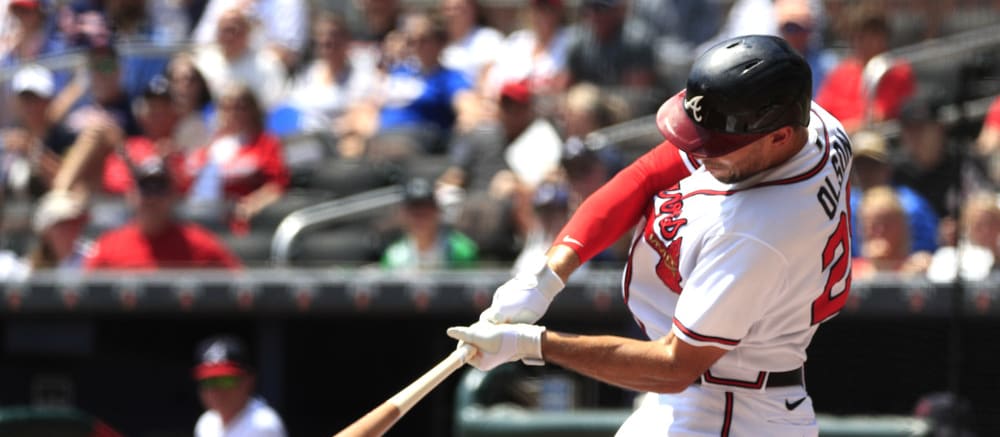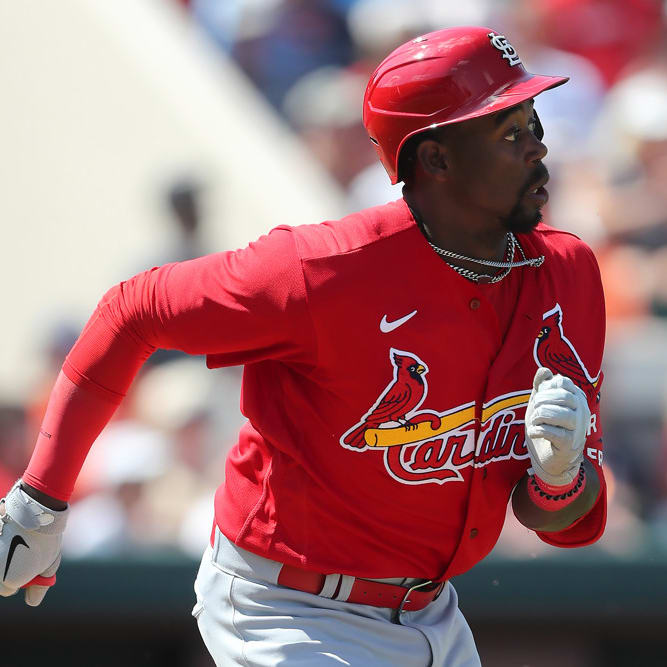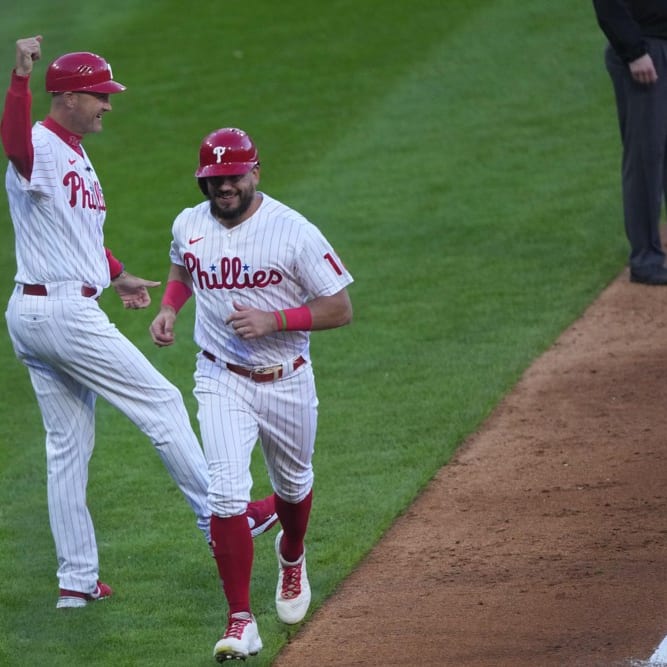This article is part of our MLB Barometer series.
We've reached an exciting milestone in the 2023 season: the RotoWire Probable Pitchers page, when set to the maximum 14 days, shows the entirety of the remaining schedule. For those looking to squeeze out every marginal edge over the final few series of the season, I recommend that page highly, as well as other articles on this site such as Todd Zola's weekly hitter and pitcher rankings, which effectively become season-long rankings this time of year.
Over in this corner of the site, we're going to use the last two weeks to zoom out and focus on some bigger picture rising and falling. We'll focus on only the risers this week, as I'll be presenting my 2023 All-Risers Team. Last year's version of the same exercise can be found here, which also serves as a reminder that this list will inevitably feature a mix of genuine breakouts (think last year's Julio Rodriguez or Spencer Strider) and players who will wind up regressing (last year's Brandon Drury, perhaps).
What I'm aiming for in this article is not just a list of the highest earners of the season — a viable approach to building such a team, no doubt, but one which would amount to essentially just a rehashing of our earned auction values page. Instead, I've tried to gather a group of players who have far outpaced preseason expectations. Some of the players on this list were drafted in the back of the top 50 last
We've reached an exciting milestone in the 2023 season: the RotoWire Probable Pitchers page, when set to the maximum 14 days, shows the entirety of the remaining schedule. For those looking to squeeze out every marginal edge over the final few series of the season, I recommend that page highly, as well as other articles on this site such as Todd Zola's weekly hitter and pitcher rankings, which effectively become season-long rankings this time of year.
Over in this corner of the site, we're going to use the last two weeks to zoom out and focus on some bigger picture rising and falling. We'll focus on only the risers this week, as I'll be presenting my 2023 All-Risers Team. Last year's version of the same exercise can be found here, which also serves as a reminder that this list will inevitably feature a mix of genuine breakouts (think last year's Julio Rodriguez or Spencer Strider) and players who will wind up regressing (last year's Brandon Drury, perhaps).
What I'm aiming for in this article is not just a list of the highest earners of the season — a viable approach to building such a team, no doubt, but one which would amount to essentially just a rehashing of our earned auction values page. Instead, I've tried to gather a group of players who have far outpaced preseason expectations. Some of the players on this list were drafted in the back of the top 50 last offseason but wound up finishing among the best players in the entire league. Others were selected very late (or not at all) but developed into players you were very happy to lock into your lineup every week even in shallower formats.
If you've ridden one or many of these players to a title challenge, let me know in the comments. If you disagree with these selections and have an All-Risers team of your own, I'd love to hear about that, too. If you're looking for a less subjective approach as well as some fallers, that's coming next week. For now, onto the team.
Catcher
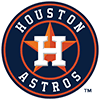 Yainer Diaz, Astros: I wouldn't argue against putting Jonah Heim in this spot, as the Rangers backstop went from a high-end C2 during draft season to a high-end C1 on the earned value leader board. Diaz, however, began the season almost entirely off the fantasy radar and will finish the year as a top-10 catcher if he holds his spot over the final three series. Diaz's big break came in the middle third of the year, when Yordan Alvarez's oblique injury opened up everyday at-bats in the designated hitter spot. Diaz is very much a free swinger, walking just 3.1 percent of the time, but he makes an above-average amount of contact (18.7 percent strikeout rate) and hits the ball very hard (12.6 percent barrel rate). That's led to a .286/.309/.552 slash line (103 wRC+), one which his .294 xBA and .562 xSLG fully endorse. Thirty-seven-year-old Martin Maldonado and his .593 OPS are set to hit the open market this winter, and if the Astros are willing to overlook Diaz's defensive deficiencies and install him as the top option behind the plate, his fantasy appeal could skyrocket. We're already talking about a player who sits second among catchers with 23 homers despite playing a modest 98 games, so he could easily lead all backstops in that category next season if used as a true starter.
Yainer Diaz, Astros: I wouldn't argue against putting Jonah Heim in this spot, as the Rangers backstop went from a high-end C2 during draft season to a high-end C1 on the earned value leader board. Diaz, however, began the season almost entirely off the fantasy radar and will finish the year as a top-10 catcher if he holds his spot over the final three series. Diaz's big break came in the middle third of the year, when Yordan Alvarez's oblique injury opened up everyday at-bats in the designated hitter spot. Diaz is very much a free swinger, walking just 3.1 percent of the time, but he makes an above-average amount of contact (18.7 percent strikeout rate) and hits the ball very hard (12.6 percent barrel rate). That's led to a .286/.309/.552 slash line (103 wRC+), one which his .294 xBA and .562 xSLG fully endorse. Thirty-seven-year-old Martin Maldonado and his .593 OPS are set to hit the open market this winter, and if the Astros are willing to overlook Diaz's defensive deficiencies and install him as the top option behind the plate, his fantasy appeal could skyrocket. We're already talking about a player who sits second among catchers with 23 homers despite playing a modest 98 games, so he could easily lead all backstops in that category next season if used as a true starter.
Honorable mentions: Jonah Heim, Francisco Alvarez
First Base
 Matt Olson, Braves: For all the talk of players struggling in their first seasons after signing a big contract, which Olson did soon after Atlanta acquired him prior to the 2022 campaign, should we perhaps be targeting those players for bounce-back seasons the following year more heavily? Looking at Olson's wRC+ over the last three seasons would hint in that direction: 147 in his last year in Oakland, a drop to a still perfectly respectable 121 last season, and then a big jump to 161 this year. That dip meant you could get him in the late third or early fourth round of 15-team mixed leagues last offseason, but after a 52-homer, 130-RBI season, which has him sitting second in earned value with less than two weeks remaining, he'll likely be found in many first rounds next year. Olson has already set career highs in both of those categories as well as in runs (118) and batting average (.279). His homers and RIB lead the league comfortably, while he sits fourth in runs and a respectable 27th out 135 qualified hitters in average, which is about as good as a true four-category player (one steal) can do. If all that isn't enough, he's also getting better as the season progresses, cutting his K rate from 27.0 percent to 18.1 percent since the break while increasing his OPS from .926 to 1.099.
Matt Olson, Braves: For all the talk of players struggling in their first seasons after signing a big contract, which Olson did soon after Atlanta acquired him prior to the 2022 campaign, should we perhaps be targeting those players for bounce-back seasons the following year more heavily? Looking at Olson's wRC+ over the last three seasons would hint in that direction: 147 in his last year in Oakland, a drop to a still perfectly respectable 121 last season, and then a big jump to 161 this year. That dip meant you could get him in the late third or early fourth round of 15-team mixed leagues last offseason, but after a 52-homer, 130-RBI season, which has him sitting second in earned value with less than two weeks remaining, he'll likely be found in many first rounds next year. Olson has already set career highs in both of those categories as well as in runs (118) and batting average (.279). His homers and RIB lead the league comfortably, while he sits fourth in runs and a respectable 27th out 135 qualified hitters in average, which is about as good as a true four-category player (one steal) can do. If all that isn't enough, he's also getting better as the season progresses, cutting his K rate from 27.0 percent to 18.1 percent since the break while increasing his OPS from .926 to 1.099.
Honorable mentions: Yandy Diaz, Spencer Steer
Second Base
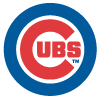 Nico Hoerner, Cubs: Hoerner was the 25th middle infielder off the board during the NFBC Main Event, but he's on track to finish eighth in earned value among that group. The interesting thing about his improvement is that he hasn't really changed all that much. After hitting .281 with 10 homers last season, he's hitting .286 with nine homers this season. Under the hood, he still looks much the same, as both his excellent strikeout rate (12.7 percent) and poor barrel rate (1.8 percent) are near matches for his numbers from last season, and if anything actually represent minor steps back. The big change for him is that he's gone from a decent steals threat (20 stolen bases last season) to an elite one, as his 41 steals this season rank fifth in the league. On a per-plate-appearance basis, he's stealing 64 percent more often this season, well above the league-wide increase of 40 percent. That illustrates that while we all predicted some sort of meaningful steals increase this past offseason, it was far from clear how the additional steals would be distributed. If you bet on Hoerner as someone who was about to run a lot more rather than just a little more, you're probably doing quite well in at least one category.
Nico Hoerner, Cubs: Hoerner was the 25th middle infielder off the board during the NFBC Main Event, but he's on track to finish eighth in earned value among that group. The interesting thing about his improvement is that he hasn't really changed all that much. After hitting .281 with 10 homers last season, he's hitting .286 with nine homers this season. Under the hood, he still looks much the same, as both his excellent strikeout rate (12.7 percent) and poor barrel rate (1.8 percent) are near matches for his numbers from last season, and if anything actually represent minor steps back. The big change for him is that he's gone from a decent steals threat (20 stolen bases last season) to an elite one, as his 41 steals this season rank fifth in the league. On a per-plate-appearance basis, he's stealing 64 percent more often this season, well above the league-wide increase of 40 percent. That illustrates that while we all predicted some sort of meaningful steals increase this past offseason, it was far from clear how the additional steals would be distributed. If you bet on Hoerner as someone who was about to run a lot more rather than just a little more, you're probably doing quite well in at least one category.
Honorable mentions: Luis Arraez, Nolan Gorman
Third Base
 Ha-Seong Kim, Padres: Kim did some of everything in his first season as an everyday player last year, but he didn't do a lot of anything in particular, finishing the year with a .251 average, 11 homers and 12 steals. That left him as a 17th- or 18th-round pick in this year's Main Event, and if you selected him there, you were in line for quite a bit of profit, as he's tracking to finish the season as a third- or fourth-round value. Some of that is down to improvements at the plate in his third season this side of the Pacific, as his .265/.356/.407 slash line is good for a 116 wRC+, 10 points better than his mark from 2022. Dig a little deeper and the picture is less clear, however, as he's actually seen his strikeout rate increase from 17.2 percent to 19.9 percent while his hard hit rate fell from 32.3 percent to 26.6 percent, the seventh-worst mark among qualified hitters. That indicates his 17 homers may be hard to duplicate next season, but his 36 steals give him another path to fantasy excellence. Kim regularly swiped at least 20 bags in Korea and topped out at 33 in 2019, and it seems as though the new rules or perhaps newfound confidence have helped him far outpace the 12 steals he managed last season.
Ha-Seong Kim, Padres: Kim did some of everything in his first season as an everyday player last year, but he didn't do a lot of anything in particular, finishing the year with a .251 average, 11 homers and 12 steals. That left him as a 17th- or 18th-round pick in this year's Main Event, and if you selected him there, you were in line for quite a bit of profit, as he's tracking to finish the season as a third- or fourth-round value. Some of that is down to improvements at the plate in his third season this side of the Pacific, as his .265/.356/.407 slash line is good for a 116 wRC+, 10 points better than his mark from 2022. Dig a little deeper and the picture is less clear, however, as he's actually seen his strikeout rate increase from 17.2 percent to 19.9 percent while his hard hit rate fell from 32.3 percent to 26.6 percent, the seventh-worst mark among qualified hitters. That indicates his 17 homers may be hard to duplicate next season, but his 36 steals give him another path to fantasy excellence. Kim regularly swiped at least 20 bags in Korea and topped out at 33 in 2019, and it seems as though the new rules or perhaps newfound confidence have helped him far outpace the 12 steals he managed last season.
Honorable mentions: Justin Turner, Jake Burger
Shortstop
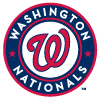 CJ Abrams, Nationals: As with the two infielders who preceded him in this column, Abrams' legs account for much of his fantasy value, an unsurprising fact for a player who was given 80-grade speed by multiple prospect outlets. He didn't show that speed much during the early part of the season, swiping a modest three bags in each of April, May and June, but he ran wild in July with 16 steals and added 13 more in August. His 42 steals on the season overall are good for fifth in the league, and his 33 since July lead the pack, with only Ronald Acuna coming within eight steals of that mark. Abrams is going to have to keep running at similar clip to justify what will surely be an elevated price tag next offseason, as his .245/.300/.416 slash line (92 wRC+) and 18 homers are entirely unremarkable, but his elite speed means that shouldn't be hard for him to accomplish. There's also a real chance he starts to show more at the plate, as he's just 22 years old and has already combined an encouraging 19.8 percent strikeout rate with a 7.5 percent barrel rate that sits just shy of league average.
CJ Abrams, Nationals: As with the two infielders who preceded him in this column, Abrams' legs account for much of his fantasy value, an unsurprising fact for a player who was given 80-grade speed by multiple prospect outlets. He didn't show that speed much during the early part of the season, swiping a modest three bags in each of April, May and June, but he ran wild in July with 16 steals and added 13 more in August. His 42 steals on the season overall are good for fifth in the league, and his 33 since July lead the pack, with only Ronald Acuna coming within eight steals of that mark. Abrams is going to have to keep running at similar clip to justify what will surely be an elevated price tag next offseason, as his .245/.300/.416 slash line (92 wRC+) and 18 homers are entirely unremarkable, but his elite speed means that shouldn't be hard for him to accomplish. There's also a real chance he starts to show more at the plate, as he's just 22 years old and has already combined an encouraging 19.8 percent strikeout rate with a 7.5 percent barrel rate that sits just shy of league average.
Honorable mentions: Bryson Stott, Matt McLain
Outfield
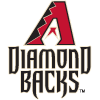 Corbin Carroll, Diamondbacks: Carroll entered the year as a consensus top-tier prospect and had just produced an .830 OPS in his 32-game cameo last season, but you could still get him in the early part of the fifth round in many 15-team drafts back in March. Perhaps it was his modest two steals during his brief debut, which kept his price tag affordable, or perhaps it was some uninspiring peripherals in that small sample, such as his 27.0 percent strikeout rate or his 32.9 percent hard hit rate. Whatever the reason, he's poised to finish the year as one of the best picks of the season and will be in contention for the first few picks after Ronald Acuna in the upcoming draft season. Carroll has been the complete package this season, hitting .279/.358/.501 with 24 homers and 47 steals. That latter mark ranks fourth in the league, and he's also in the top 10 in runs scored (104). Those aforementioned middling peripherals also seem to be nothing more than a small-sample blip, as Carroll's 19.7 percent strikeout rate and 41.2 percent hard hit rate both represent major improvements. An early-July scare with an injury to the same right shoulder that required surgery two years ago at one point appeared threatening, but his .772 OPS since that incident should be good enough to assuage most fears.
Corbin Carroll, Diamondbacks: Carroll entered the year as a consensus top-tier prospect and had just produced an .830 OPS in his 32-game cameo last season, but you could still get him in the early part of the fifth round in many 15-team drafts back in March. Perhaps it was his modest two steals during his brief debut, which kept his price tag affordable, or perhaps it was some uninspiring peripherals in that small sample, such as his 27.0 percent strikeout rate or his 32.9 percent hard hit rate. Whatever the reason, he's poised to finish the year as one of the best picks of the season and will be in contention for the first few picks after Ronald Acuna in the upcoming draft season. Carroll has been the complete package this season, hitting .279/.358/.501 with 24 homers and 47 steals. That latter mark ranks fourth in the league, and he's also in the top 10 in runs scored (104). Those aforementioned middling peripherals also seem to be nothing more than a small-sample blip, as Carroll's 19.7 percent strikeout rate and 41.2 percent hard hit rate both represent major improvements. An early-July scare with an injury to the same right shoulder that required surgery two years ago at one point appeared threatening, but his .772 OPS since that incident should be good enough to assuage most fears.
 Cody Bellinger, Cubs: Bellinger was available at pick 183 of the NFBC Main Event, with Jeff McNeil and Whit Merrifield the closest outfielders on the ADP chart. Even that modest price may have seemed to steep for a player who hit .193/.256/.355 across the last two seasons and whose move from the Dodgers to the Cubs looked like a step backwards in terms of each organization's respective reputations for player development. Those who took the chance on him have been handsomely rewarded, as he's set to finish the season right around the back end of the first round, with Kyle Tucker and Juan Soto the nearest outfielders in earned auction value. While his .311/.356/.534 slash line, 25 homers and 20 steals this year represents an excellent return, however, it's harder to figure out what to do with Bellinger heading into next season than it is with most players on this list. Much of his success this year can be attributed to the fact that he's cut his strikeout rate to 16.0 percent, well below his 27.1 percent mark from his two years in the wilderness and below even his 16.4 percent rate from his MVP season in 2019. Increased contact frequency hasn't been paired with increased contact quality, however, as his 6.2 percent barrel rate and 31.5 percent hard hit rate are both career lows. That raises the possibility of a power outage next season even if he continues to contribute in other categories.
Cody Bellinger, Cubs: Bellinger was available at pick 183 of the NFBC Main Event, with Jeff McNeil and Whit Merrifield the closest outfielders on the ADP chart. Even that modest price may have seemed to steep for a player who hit .193/.256/.355 across the last two seasons and whose move from the Dodgers to the Cubs looked like a step backwards in terms of each organization's respective reputations for player development. Those who took the chance on him have been handsomely rewarded, as he's set to finish the season right around the back end of the first round, with Kyle Tucker and Juan Soto the nearest outfielders in earned auction value. While his .311/.356/.534 slash line, 25 homers and 20 steals this year represents an excellent return, however, it's harder to figure out what to do with Bellinger heading into next season than it is with most players on this list. Much of his success this year can be attributed to the fact that he's cut his strikeout rate to 16.0 percent, well below his 27.1 percent mark from his two years in the wilderness and below even his 16.4 percent rate from his MVP season in 2019. Increased contact frequency hasn't been paired with increased contact quality, however, as his 6.2 percent barrel rate and 31.5 percent hard hit rate are both career lows. That raises the possibility of a power outage next season even if he continues to contribute in other categories.
 Josh Lowe, Rays: Several outfielders with power, speed and contact concerns who went late in drafts made noise early in the season — most notably Lowe, James Outman and Jack Suwinski — but Lowe is one who's set to end the season as the best fantasy value, sitting just outside the top 15 outfielders in earned value as of writing. His ranking is all the more impressive when considering that his breakout year hasn't allowed him to break free of the Rays' platoon system, as he's started just four times against lefties. Even with more playing-time limitations than most elite fantasy outfielders, Lowe has still been able to post very respectable counting-stat totals across the board, with 18 homers, 30 steals, 61 runs and 75 RBI as of writing. Those totals have been paired with a .281/.323/.482 slash line, good for a 122 wRC+. Lowe is still not a complete player, with a career 22 wRC+ against lefties and sub-par plate skills, but he's on the team that knows how to use incomplete players the best, so there's reason to believe he'll continue to produce going forward. The fact that he's continued to improve his strikeout rate, which has gone from 33.3 percent last year to 27.4 percent prior to the break this year and now 20.9 percent in the second half, should increase confidence in him in next year's drafts.
Josh Lowe, Rays: Several outfielders with power, speed and contact concerns who went late in drafts made noise early in the season — most notably Lowe, James Outman and Jack Suwinski — but Lowe is one who's set to end the season as the best fantasy value, sitting just outside the top 15 outfielders in earned value as of writing. His ranking is all the more impressive when considering that his breakout year hasn't allowed him to break free of the Rays' platoon system, as he's started just four times against lefties. Even with more playing-time limitations than most elite fantasy outfielders, Lowe has still been able to post very respectable counting-stat totals across the board, with 18 homers, 30 steals, 61 runs and 75 RBI as of writing. Those totals have been paired with a .281/.323/.482 slash line, good for a 122 wRC+. Lowe is still not a complete player, with a career 22 wRC+ against lefties and sub-par plate skills, but he's on the team that knows how to use incomplete players the best, so there's reason to believe he'll continue to produce going forward. The fact that he's continued to improve his strikeout rate, which has gone from 33.3 percent last year to 27.4 percent prior to the break this year and now 20.9 percent in the second half, should increase confidence in him in next year's drafts.
Honorable mentions: Lane Thomas, Esteury Ruiz, Chas McCormick, James Outman
Starting Pitcher
 Blake Snell, Padres: I was happy when I grabbed Snell as my second starter in Tout Wars back in March (in the 12-team NL Only league) for $15, but I only had that as a $2 profit on my sheet. Our earned values page when set to those settings has him at $30 as of writing, trailing only Spencer Strider in the NL, and only Strider and Gerrit Cole in the entire league. He's very close to picking up his second career Cy Young — making him the seventh pitcher ever (and first since Max Scherzer) to do so in both leagues — for his efforts. He's heating up at the right time for a team that's going nowhere, with his seven no-hit innings at home against the Rockies in his last start capping a five-start stretch in which he has a 0.56 ERA.
Blake Snell, Padres: I was happy when I grabbed Snell as my second starter in Tout Wars back in March (in the 12-team NL Only league) for $15, but I only had that as a $2 profit on my sheet. Our earned values page when set to those settings has him at $30 as of writing, trailing only Spencer Strider in the NL, and only Strider and Gerrit Cole in the entire league. He's very close to picking up his second career Cy Young — making him the seventh pitcher ever (and first since Max Scherzer) to do so in both leagues — for his efforts. He's heating up at the right time for a team that's going nowhere, with his seven no-hit innings at home against the Rockies in his last start capping a five-start stretch in which he has a 0.56 ERA.
Remarkably, he owns a 13.7 percent walk rate over those outings, and he had an even worse 18.7 percent walk rate over a six-start stretch that covered all of July in which he posted the same 0.56 ERA. It's going to be hard to fully trust a pitcher with a 13.5 percent walk rate heading into next season — no qualified starter over the previous decade has finished above 12.0 percent — and his .255 BABIP and 86.2 percent strand rate have certainly contributed to his ERA being as low as 2.33. Nobody who took a chance on him this year is complaining, though, and it's not impossible that he'll record similar numbers again. He's done so before, during his award-winning season with the Rays in 2018. That year bears many eerie similarities to this one: an outstanding ERA (1.89) and strikeout rate (31.6 percent), lots of help from his BABIP (.241) and strand rate (88.0 percent), and no playoff berth.
 Justin Steele, Cubs: How many starts of good but not elite performance do we need to see from a previously ignorable pitcher to become interested? That's a question Steele's performance this year should encourage drafters to evaluate over the winter. The lefty produced a 3.18 ERA and 3.81 SIERA last season, but as it came in 24 starts for a 26-year-old who was previously an unheralded prospect who'd recorded a forgettable 4.26 ERA as a rookie swingman the year prior, it didn't send him soaring up draft boards. If Steele merely repeated his marks from last season, his Main Event ADP of 297 may already have been a bargain. Instead, he's only gone and made himself a Cy Young candidate, winning 16 games while producing a 2.73 ERA and 3.67 SIERA. He's gotten there partially by maintaining his solidly above-average strikeout rate (24.2 percent) and groundball rate (49.4 percent), things we could have seen coming if we bought into his 2022 numbers. What's helped him go from a good value pick to a potential league-winner is his improvement in control, with his walk rate plunging from 9.8 percent to 5.2 percent. That control makes it much easier to believe that Steele is here to stay.
Justin Steele, Cubs: How many starts of good but not elite performance do we need to see from a previously ignorable pitcher to become interested? That's a question Steele's performance this year should encourage drafters to evaluate over the winter. The lefty produced a 3.18 ERA and 3.81 SIERA last season, but as it came in 24 starts for a 26-year-old who was previously an unheralded prospect who'd recorded a forgettable 4.26 ERA as a rookie swingman the year prior, it didn't send him soaring up draft boards. If Steele merely repeated his marks from last season, his Main Event ADP of 297 may already have been a bargain. Instead, he's only gone and made himself a Cy Young candidate, winning 16 games while producing a 2.73 ERA and 3.67 SIERA. He's gotten there partially by maintaining his solidly above-average strikeout rate (24.2 percent) and groundball rate (49.4 percent), things we could have seen coming if we bought into his 2022 numbers. What's helped him go from a good value pick to a potential league-winner is his improvement in control, with his walk rate plunging from 9.8 percent to 5.2 percent. That control makes it much easier to believe that Steele is here to stay.
 Zach Eflin, Rays: Eflin was taken just before Steele in the 20th round of the NFBC Main Event on average, and he's set to finish a hair behind Steele as a genuine fantasy ace. (The same can't be said of the other two pitchers with an ADP in that round, Michael Kopech and Eric Lauer.) Some interest in Eflin was certainly warranted after the righty signed with the Rays in free agency, both due to his new club's reputation for improving pitchers as well as the big improvement in park factors he'd enjoy upon leaving Philadelphia, but very few fans would have expected anything like this. With just one or two outings left in the season, Eflin is set to finish with career bests in ERA (3.44), WHIP (1.01), wins (15), strikeout rate (26.0 percent), walk rate (3.5 percent) and groundball rate (50.3 percent). Those improvements come with a shift in pitch mix, as Eflin has cut his fastball usage from 56.0 percent to 37.5 percent while increasing the usage of his cutter and curveball. Perhaps most impressively given the knee troubles that sent him to the bullpen at the tail end of the 2022 season, he's done all that while also setting career highs in innings (167.2) and starts (29).
Zach Eflin, Rays: Eflin was taken just before Steele in the 20th round of the NFBC Main Event on average, and he's set to finish a hair behind Steele as a genuine fantasy ace. (The same can't be said of the other two pitchers with an ADP in that round, Michael Kopech and Eric Lauer.) Some interest in Eflin was certainly warranted after the righty signed with the Rays in free agency, both due to his new club's reputation for improving pitchers as well as the big improvement in park factors he'd enjoy upon leaving Philadelphia, but very few fans would have expected anything like this. With just one or two outings left in the season, Eflin is set to finish with career bests in ERA (3.44), WHIP (1.01), wins (15), strikeout rate (26.0 percent), walk rate (3.5 percent) and groundball rate (50.3 percent). Those improvements come with a shift in pitch mix, as Eflin has cut his fastball usage from 56.0 percent to 37.5 percent while increasing the usage of his cutter and curveball. Perhaps most impressively given the knee troubles that sent him to the bullpen at the tail end of the 2022 season, he's done all that while also setting career highs in innings (167.2) and starts (29).
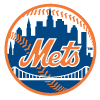 Kodai Senga, Mets: Senga had his believers over the offseason, enough to be selected as the 54th starting pitcher off the board on average during the NFBC Main Event, but there wasn't much buzz that he would finish as a genuine fantasy ace. As of writing, he's right on the edge of earning that title, sitting 16th in earned value among starters, with mere decimals separating spots 14 through 17. The 30-year-old righty may not quite match his 1.94 ERA from his final season in Japan, but his 2.95 ERA beats most reasonable expectations. Control has been a worry, with his 11.1 percent walk rate contributing to a less impressive 1.21 WHIP, but he's been able to miss plenty of bats, with his 29.5 percent strikeout rate good for fifth among qualified starters. He's also kept the ball on the ground, with his 45.3 percent groundball rate besting every other pitcher who sits in the top 10 in strikeout rate. That impressive combination is thanks in part to his "ghost fork," part of a diverse repertoire that features four pitches that he throws between 12 and 36 percent of the time. It's a useful reminder that pitchers overseas often hit the ground running better than batters, something that's important to keep in mind if Yoshinobu Yamamoto makes the anticipated leap this winter.
Kodai Senga, Mets: Senga had his believers over the offseason, enough to be selected as the 54th starting pitcher off the board on average during the NFBC Main Event, but there wasn't much buzz that he would finish as a genuine fantasy ace. As of writing, he's right on the edge of earning that title, sitting 16th in earned value among starters, with mere decimals separating spots 14 through 17. The 30-year-old righty may not quite match his 1.94 ERA from his final season in Japan, but his 2.95 ERA beats most reasonable expectations. Control has been a worry, with his 11.1 percent walk rate contributing to a less impressive 1.21 WHIP, but he's been able to miss plenty of bats, with his 29.5 percent strikeout rate good for fifth among qualified starters. He's also kept the ball on the ground, with his 45.3 percent groundball rate besting every other pitcher who sits in the top 10 in strikeout rate. That impressive combination is thanks in part to his "ghost fork," part of a diverse repertoire that features four pitches that he throws between 12 and 36 percent of the time. It's a useful reminder that pitchers overseas often hit the ground running better than batters, something that's important to keep in mind if Yoshinobu Yamamoto makes the anticipated leap this winter.
Honorable mentions: Logan Webb, Kyle Bradish, Jose Berrios, Tanner Bibee, Mitch Keller, Bryce Elder, Braxton Garrett
Relief Pitcher
Alexis Diaz, Reds: The earned value leader board shows a clear top tier of three closers this season: Diaz, Devin Williams and Felix Bautista. But while Williams and Bautista were the fourth and seventh closers off the board, respectively, Diaz was 12th. His performances this season have made an excellent case for waiting to grab your first reliever. Diaz's 1.84 ERA as a rookie in 2022 was outstanding, but between his brief track record, his tough home park and doubts about how many save opportunities the Reds would present him with, a healthy amount of skepticism was warranted. Caveats about season-to-season volatility for relievers aside, very little skepticism should remain this upcoming winter. The hitter-friendly home park isn't going away, but the Reds' rapid return to competitiveness has made fears about a lack of save opportunities obsolete, as the team leads the league with 51 saves this season. Diaz should continue to receive the vast majority of those opportunities next season, as his second consecutive year with an excellent ERA (2.51), WHIP (1.07) and strikeout rate (31.5 percent) leaves him looking very much like a top-tier closer. Deciding between him and his brother Edwin could be a tough call next spring.
Honorable mentions: David Bednar, Craig Kimbrel

